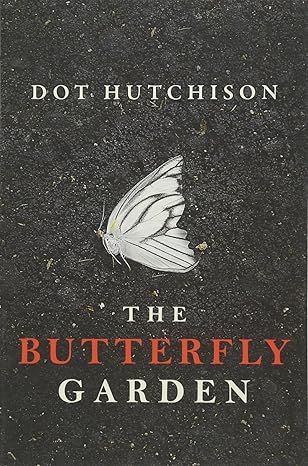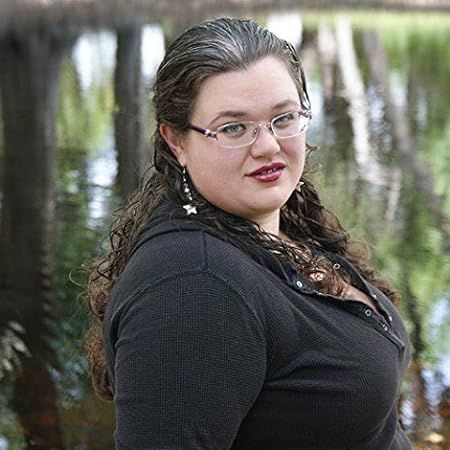The Butterfly Garden (The Collector, 1)
4.3 out of 5
88,556 global ratings
An Amazon Charts bestseller.
Near an isolated mansion lies a beautiful garden.
In this garden grow luscious flowers, shady trees…and a collection of precious “butterflies”—young women who have been kidnapped and intricately tattooed to resemble their namesakes. Overseeing it all is the Gardener, a brutal, twisted man obsessed with capturing and preserving his lovely specimens.
When the garden is discovered, a survivor is brought in for questioning. FBI agents Victor Hanoverian and Brandon Eddison are tasked with piecing together one of the most stomach-churning cases of their careers. But the girl, known only as Maya, proves to be a puzzle herself.
As her story twists and turns, slowly shedding light on life in the Butterfly Garden, Maya reveals old grudges, new saviors, and horrific tales of a man who’d go to any length to hold beauty captive. But the more she shares, the more the agents have to wonder what she’s still hiding…
286 pages,
Kindle
Audiobook
Hardcover
Paperback
First published May 31, 2016
ISBN 9781503934719
About the authors
Dot Hutchison
Dot Hutchison is the author of A Wounded Name, a young adult novel based on Shakespeare’s Hamlet, and the adult thriller The Butterfly Garden. With past experience working at a Boy Scout camp, a craft store, a bookstore, and the Renaissance Faire (as a human combat chess piece), Hutchison prides herself on remaining delightfully in tune with her inner young adult. She loves thunderstorms, mythology, history, and movies that can and should be watched on repeat. For more information on her current projects, visit www.dothutchison.com or check her out on Tumblr (www.dothutchison.tumblr.com), Twitter (@DotHutchison), or Facebook (www.facebook.com/DotHutchison).
Read more
Reviews
R. Reza
5
An incredible combination of dark, original, brutal, and beautiful.
Reviewed in the United States on May 26, 2017
Verified Purchase
Overall thoughts The Butterfly Garden blew my mind, and it definitely left me wanting more. The combination of such a gripping and intriguing premise, profound and memorable characters and a fantastic use of language has caused this novel to become one of my favorite reads of the year, and one of my favorite mystery & thriller books. While there are some things that I dislike, such as the somewhat lackluster ending, as a whole, the book was nothing short of absolutely amazing. However, I understand that it won’t be for everyone and that many will turn away from the book, be it because of the plot or the brutality of some of the themes. For those that decide to read this, it will probably become a fast-paced and enjoyable ride that will prove itself hard to put down. In this case, the rating that I would give this book would be a solid 5 out of 5 without any hesitation. For a more detailed account of my thoughts, please read below, though there might be some minor spoilers (and I would most definitely recommend reading this book without not knowing much about it).
Plot & Themes This book revolves around a very unique, dark and disturbing premise. A girl, known for the most part as Maya, recounts the tale of how she got herself kidnapped and woke up to what she, and others, referred to as the Garden, which is run by the Gardener, though his sons are also present at different points in the story. While the story starts with Maya being interrogated by a pair of FBI agents who are trying to find out more about the Garden, we are quickly exposed to the actual events that took place in this location.
Despite being kidnapped by a male figure, Maya found herself being awoken by another young girl. This girl is later revealed also to have been kidnapped, and she’s not the only one. Little by little, we are exposed to the practices that take place in this garden. For starters, every girl is tattooed with a different butterfly on her back. Until then, the girls are mostly kept in isolation from the rest of the victims. As she starts being acclimated to the conditions of the Garden and as she gets her own tattoo, Maya starts discovering some harsh realities of her new existence. The harshest of all, perhaps, is that all of these girls are trapped in a dome.
These girls are free to roam the Garden, though they do follow some strict schedules and rules. For example, they need to eat at certain times of the day, and they are only allowed to have select snacks and drinks outside of the designated meals. Furthermore, if any girl isn’t eating, for whatever reason, then they get a visit from the lunch lady, who also happens to be the nurse. This, however, doesn’t even begin to cover the realities that these girls face.
As soon as the girls get their own tattoos, they are raped for the first time by the Gardener. This is, sadly, not the only time that this occurs. In fact, this is a very common occurrence, with the Gardener visiting these girls quite often. The Gardener is not the only person to take part in these activities either, as oldest son also does this. This son in particular though tends to be more brutal with these girls. While the Gardener seems to have some level of affection and seems to care about these girls to some degree, these sentiments are not shared by his son. His son, in fact, tortures and sodomizes the girls through some very sadistic behavior. He even ends up killing some by accident, which leads to another important of the book: death.
Death is an important aspect of the novel. It is a reality that the girls have learned to accept and something that they are surrounded by and reminded of daily. This can be explained thanks to the deranged reasoning that the Gardener provides in order to have his butterfly garden. It is revealed throughout the book that the Gardener’s father used to have a collection of butterflies, which he eventually lost in an accident. Following his father’s footsteps, the Gardener decides to have his own collection, though in a much more disturbing way: by collecting girls with butterfly tattoos on their backs. Due to the relatively short lifespan of butterflies, the Gardener attempts to recreate this phenomenon on his own collection. The way he does this is by injecting them with formaldehyde, and later preserving their bodies on glass displays. These young, preserved girls are kept in the halls of the Garden, next to where the current residents sleep, hence the constant presence of death in the novel.
Another incredibly strong aspect of the book is the characters themselves. The characters in the novel are extremely complex and have their own personality traits. These characters are presented in a way that it is easy to distinguish between them, due to their mannerism and behavior, and in a very convincing manner. The interactions between them also present some very memorable, enjoyable, and emotional moments. The girls throughout the story go through different events, from periods of celebration and happiness to mourning and despair. Even those characters that could be labeled as the villains have their own depth. In my opinion, these characters have certain traits and characteristics that make them easier to remember and to distinguish from past characters in similar genres.
Narration & use of language The narration shifts throughout the book. The scenes where Maya is being interrogated are narrated from a third person perspective, while the events of the Garden are told in the first person. The interplay between both narrative styles is easy to follow and suits the story well. The language used throughout the book is phenomenal. The author has managed to write the novel in such a way that it hooks the reader, despite how messed up and disturbing some of the things are. The descriptions also make the book very vivid. Lastly, the language flows very well and is incredibly easy to follow, causing it to be a fantastic page turner.
Recommendations for further reading I’d recommend this book to anyone that is looking for a solid thriller or, to some extent, a horror novel. I’d also recommend it to those that are looking for either something dark, memorable, or original. Due to the originality, there is very few books that I’d recommend that could capture the same amount of emotions, details, and creativity as The Butterfly Garden does. In the mystery and thriller area, I’d recommend Before I Go to Sleep by S.J. Watson. Leaning more towards horror, I’d recommend A Head Full of Ghosts by Paul Tremblay. Lastly, for those that want something between horror and thriller, I’d recommend Bird Box by Josh Malerman.
Thanks for reading my review, and I hope that those of you that decide to read this book enjoy it. Happy reading!
Read more
63 people found this helpful
Amazon Customer
5
Wow
Reviewed in the United States on July 17, 2024
Verified Purchase
Wonderfully written book with a strong main character. Subject matter was heart wrenching but a good read nonetheless. I liked that it wasn’t chapters but just sections.
Amazon Customer
5
Captivating
Reviewed in the United States on July 23, 2024
Verified Purchase
Amazing writing that keeps you captivated page after page. The story behind the girls and their brave fight for survival is inspiring to never give up, never stop fighting.
Melissa
5
A must read! No spoiler review!
Reviewed in the United States on July 11, 2024
Verified Purchase
Wow, just wow. I was so on the fence about this book and had many tell me to stick with it, that it would be worth it. Oh boy, they were right. I kept reading and before I knew it I was so invested in all the characters that I couldn’t stop reading. If I couldn’t read it (being in my car) I would listen to it. I was staying up until my eyes would finally not open after a blink just to read a little more.
I did NOT expect what happened in the end and I have to say I am so unbelievably happy that I read this book.
There are A LOT of negative reviews and there are just as many if not more good reviews. Take the chance with this one and read it, listen to it, or do both like I did. Either way just go for it, stick with it and you too will not be disappointed that you did.
Read more
Ron K
5
Butterflies Are Not Free
Reviewed in the United States on February 9, 2018
Verified Purchase
There is a lot to like in The Butterfly Garden by Dot Hutchison. I first liked the simplicity yet expressiveness of the cover (at least in the Kindle selection I read.) There is a butterfly, the novel’s name, and the author’s name. There are no blaring font announcements that this is a thrilling psychological thriller (that will leave you gasping). No promises that it is a page-turner. Just a good presentation. But it is one of the best psychological thrillers I have read. There are surprises; it will leave a reader turning pages quickly and it will appeal to fans of a TV series “Lie to Me.”
The setting of the novel is in an interrogation room, although the questioners would shy away from the term “interrogation.” But that was what was taking place and naming it as anything else would not fool Maya. Special Agent Brandon Eddison and Special Agent in Charge Victor Hanoverian were skilled investigators of crimes committed against children. Maya was a few years shy of twenty-one, but she was streetwise and somewhat amused by the questioning techniques employed by the two FBI agents. After all, they didn’t even know her name. At least they knew her name wasn’t Maya and she intended to play the game out until she decided she wanted to provide her real name.
Maya is the central figure in a harem of butterflies created by The Gardener. A rich businessman, he was able to construct a private, fortified garden in which he could indulge his fantasies. Although they had a sexual component, his actual fantasy was that he was saving girls from the street and the hard lives they would have had to lead to survive. The Gardener and his son Avery would kidnap girls that The Gardener would think at risk. They would select girls no younger than sixteen and could be any age up to twenty-one. Older was not better because when a girl reached her twenty-first birthday, she was killed, embalmed, and displayed in containers filled with a resin that kept the body on display. There were many containers that attested to the success of The Gardener’s project.
Why butterflies? The gardener liked butterflies; he studied them. After kidnapping a girl, The Gardener selected a butterfly and tattooed its likeness on the shoulders and back of the kidnap victim. Having sex after tattooing each girl finalized his possession ritual. The girls were then free to live in his garden, complete with waterfall, a library and an abundance of plants and trees, until they were twenty-one when they would be expected to join previous butterflies on display. Once a girl was killed, The Gardener would search for a replacement so that the living butterfly collection remained at about twenty-three.
This size of the confined population gives the author lots of room for character development and Hutchison does this skillfully. Characters are developed well through their behaviors as near familial relationships are developed and broken. With these many characters, it would be easy for an author to give each one a one or two-line description and move on. Hutchison does not do this as characters appear, seem to go away, and then reappear with a valuable contribution to the story. There are inferences and implications seemingly made by characters, but all done through the filter of Maya’s memories. She exposes each character as much or as little as she wants. Characters “speak” through her. And she has an agenda; she will protect the identity of Maya.
Opposing Maya are two FBI agents. Eddison comes off as the heavy, the bad cop, the unintelligent one that Maya has fun manipulating. Maya has realized that Victor Hanoverian might be her equal. She needs to protect her identity until a certain event comes to pass. And she is the only one who knows what the event is. The dialogue between the agents and Maya comes across as very cerebral. The agents had training, but Maya grew up with street survival skills.
I do not believe that anyone can predict this ending. What happened to specific girls? Who is The Gardener? What life does he have outside the Garden? Is there any way to escape? The answers to a lot of these questions are answered throughout the novel. But for the big questions, Maya’s identity and Maya’s agenda, you must read the entire novel.
The novel’s subject will be difficult for some readers. This is about young girls in captivity being tortured and sexually abused by one or more pedophiles. Knowing the subject, is a warning necessary?
This is a good psychological thriller. I gave this five Amazon stars and look forward to reading more Dot Hutchison books.
Read more
7 people found this helpful
Amazon Customer
4
A quick, fun thriller
Reviewed in the United States on May 28, 2024
Verified Purchase
I enjoyed how easy this was to digest, and the fact that I couldn’t put it down means the story itself gets 4 stars.
I don’t go a full 5 because the writing wasn’t my style, and the protagonist’s voice was way too inaccurate for a girl her age, even with her trauma and intelligence. It was too unbelievable to read her as under 18. Though her voice was so mature that it was helpful for imagining her as much older when having to imagine the crimes committed against her.
Spoiler alert?
Sophia’s story line also feels very implausible. Maybe the next book fills that plot hole, but her back story is too wild and comes out of seemingly nowhere. The coincidence involved in both she and Inara experiencing the garden seems so outlandish it doesn’t even fit in a story that’s already pretty wild.
Other thank that, though, I liked it and will try the rest of the books.
Read more
2 people found this helpful
Jette
4
A heavy, heart-pounding read
Reviewed in the United States on July 29, 2018
Verified Purchase
4.4 out of 5 stars!
The Butterfly Garden is a heavy, heart-pounding read. I laughed, I cried, I yelled at the characters, my hands shook, and it hit almost all the right buttons for me.
Before I get into the story aspects that I appreciated (and a couple I didn't), I want to say that the format was difficult for me to sink into right away. There are two parallel stories: a present tense third-person narrative in which the FBI are questioning Maya, and a first-person past tense narrative that acts as Maya's responses. The narrative that acts as dialogue didn't really work well initially because you knew she was speaking, yet it contained descriptive details that wouldn't have been conveyed in conversation (like how a character adjusted her bra). However, the story was able to engage me enough to draw me in and acclimate me to the format.
Initially, Maya's responses bounce from the Garden to her life before the Garden. Sometimes these lapses killed the tension that had just been built up, but I pushed through, knowing that the lapse would be short and the story continued on just the other side. This ends when we read into Part II (it's a three-part novel), and it is smooth sailing from there.
Although the narrative is rife with triggers (sexual assault, child abuse and neglect--mentioned, not witnessed, violence against women, drug addiction), Hutchison is delicate in her delivery. She doesn't get more descriptive until Part II, and even then she focuses more on effect than cause.
Each character we meet has something unique about them that sets them apart from the others, even though we encounter about twenty Butterflies, three FBI agents, a few FBI techs, and a few parents. If this makes it sound overwhelming: it's not. They all one have something to make them stand out from one another. I love the rapport Hutchison gave each of these characters. They play off of each other differently and in a believable fashion.
That also ramps up the stress and tension, for all the right reasons: We felt for the girls, even if we only met them briefly. They were engaging and unique, so when something horrible happened to them, we mourned. Some we mourned in passing, others we mourned... much longer.
<blockquote>“Always. You never had to wait for someone [to die]. You mourned them every single day, as they mourned you, because every day we were dying.”</blockquote>
My favorite scene of the entire novel is borne of the bond the Butterflies develop:
<blockquote>That afternoon found me in Danelle’s room with a bowl of water in my lap so I could carefully rewet her hair each time I needed to run the brush through it. She sat in front of me on the bed twining ribbons through sections of Evita’s hair before she twisted them up into a mass on the back of her blonde head. For Danelle, I braided small sections of hair to drape between two high buns, and others to fall down her back. They were too thin to obscure the wings, but they were her small defiance. Hailee sat behind me doing something with brush and pins, while Simone stood behind her with ribbons and twists and oil.</blockquote>
Hutchison successfully captures the fucked-up psychology that accompanies long-term trauma: dark humor, self-deprecation, and wry acceptance of what occurs and what might occur. These moments might seem unbelievable or surreal for someone who has never been in such a situation, but for someone who has they resonate strongly (speaking as a survivor of three years of domestic violence).
<blockquote>It was sick. I don’t think there’s a person there who doubted that. It was sick and wrong and profoundly twisted, and yet somehow it made us feel a lot better.</blockquote>
There were several allusions throughout the story that led me to believe Hutchison was foreshadowing something, and I thought I knew what would happen toward the end. I was wrong. I enjoyed being wrong very much.
For some readers, The Butterfly Garden will test their suspension of disbelief, mostly concerning the setting:
<blockquote>As far as I could tell, the greenhouse we called the Garden was actually one of two, one inside the other like nesting dolls. Ours was the one in the center, impossibly tall, with our hallways wrapped around it in a square.</blockquote>
Living near the mountains, I understand very well how a compound like this can be... perhaps not hidden, but inconspicuous enough to overlook or pass by.
The only detail of the story that tested my personal suspension of disbelief is at the tail end--and as far as the reader can determine, not an aspect of the conflict. Since I enjoyed the novel overall, and I don't know what the sequels will hold, I am more than willing to overlook what seems to me to be a plot-contrivance fairy.
One gripe I have that I can easily overlook is that the Gardener seems a bit bland. We know he has self-control, he's intimidating in what he does and can do, but we don't see him ever doing it. He doesn't lose his temper and is almost always the doting, refined "gentleman," never the frightening, looming threat the Butterflies fear.
I personally would love a brief foray into his mind as a short story or novella. But I may end up saying that about every serial killer we encounter on this blog.
I enjoyed The Butterfly Garden very much, although in the beginning I sometimes felt the need to push through short sections. I was still desperate to see what would happen on the other side. The tension and emotional impact of the story more than compensate for any flaws with the story or format.
Read more
7 people found this helpful
Brittany G
4
solid read; tastefully done.
Reviewed in the United States on July 27, 2024
Verified Purchase
It’s a good book, strong triggers but tastefully done. I do recommended this but not for the faint of heart. Triggers: sexual abuse, rape, kidnapping, murder, torture
Jen S.
3
3.5 Stars
Reviewed in the United States on May 2, 2016
Verified Purchase
This review does not contain spoilers, however, I do discuss points included in Amazon's summary description; if you consider those spoilers, avoid this review. :)
I read this as my Kindle First selection for May.
The novel contains violence, profanity, sexual violence against minors, pedophilia, and rape (both of minors and adults). The majority of this type of content is non-graphic, but it is very prevalent (rape is often referred to, but is rarely shown 'on-screen.') Given what the story is, none of the content felt gratuitous. but for those who are triggered by it, or prefer stories without it, avoiding this story might be advisable.
-o-
'The Butterfly Garden' is told in alternating first and third-person-limited perspectives: the main character relates her story to FBI agents following her rescue from the Garden. I have mixed feelings about this approach. When used by experienced writers (Rothfuss' 'Name of the Wind' is a good example), a nested story can be very effective. Unfortunately, in 'The Butterfly Garden's' case it ruins much of the suspense: the audience knows the protagonist escapes. From Amazon's summary/blurb, we know most of the other details of what she endured during her captivity. There is little left to surprise us. I found the sections containing the protagonist's backstory to be somewhat needless, and a little long in exposition.
The writer's style is competent and accessible, making for a quick read. Not too many clunky sentences, although the dialogue (especially at the beginning) isn't natural. I found the first-person much smoother than the third-person; perhaps if the entire novel were told linearly in first-person, I would have enjoyed it more. The style is engaging enough that I would likely read another of this author's stories to see her improve.
The protagonist was somewhat unbelievable, as I found her vocabulary, mannerisms, emotional maturity, and so on to be that of an adult. It takes a lot of suspension of disbelief for me to buy that a child who had her background, also had that level of polish. This seems to be more of a YA trope, and I was surprised to see it in an adult thriller novel. (Her knowledge of classic literature is an example of this, and an author making a heroine just a little too cool.) The side characters were underdeveloped in the third-person sections, although in the first-person bits were better.
While on the subject of suspension of disbelief...I don't expect present-day thrillers to require the level of suspension this one does. It was hard to believe in the setting, both that it could exist (how do you find contractors to build this sort of thing?) and that it was never discovered. Maybe in a futuristic science fiction novel, where things can be a bit surreal this Garden would have been more believable. Your mileage may vary, of course.
The pacing was just 'okay' for me. The third person portions tended to exposition, which made those times in the story feel like they moved more slowly.
The 'twist' at the ending was unnecessary, without adequate foreshadowing to make it satisfying for the reader.
Bottom line? No two ways about it,this book was weird for me. I can't say I 'liked' it, but I didn't dislike it, either, despite my criticisms above. If Amazon allowed half-stars, I would give it 3.5 stars, and I would likely read another of this author's future novels.
Read more
1 people found this helpful
Amirah
1
Terribly Written Book. Do Not Waste Your Time
Reviewed in the United States on September 24, 2017
Verified Purchase
The Butterfly Garden was, without a shadow of a doubt, the worst book I have ever read. First, I’d like to say that I enjoy the horror/thriller genre. I don’t consider disturbing depictions of murder or rape a reason to rate a book poorly. Secondly, I’m not the kind of person who just hates on books because I don’t like the ending or I didn’t like one of the scenes. I dislike books that are unbelievable or otherwise don’t make any sense.This book is the worst book I have ever read because the premise was mundane and tired, the choice of first-person narrative was a huge mistake, and the final “twist” at the end will leave you not only angry at how much time you wasted, but curious as to how such a terrible book made it through the editing process. This review will not contain any spoilers that aren’t already in the synopsis of this story (which, admittedly, are the only interesting parts of this novel in general). All quotations used are from the synopsis. Part One: Plot and Story Failures Firstly, and I hate to insult your intelligence with this statement but, the main point of a suspense/thriller novel is to be suspenseful and thrilling. This book is neither of those things. Within the first few pages (and in the synopsis), you know that an undisclosed number of girls called “butterflies” were held captive by a “brutal, twisted” man called “the Gardner” that would go to any length “to hold beauty captive.” And you know that the FBI has one of the “butterflies” in an interrogation room: Maya. The book tries to make her out to be a mysterious figure that might be hiding something that could break the case wide open, but at this point, there is seemingly nothing to tell. Nothing they would need from her in order to convict “the Gardner,” anyway. Still, they hold her there for hours on end prying information out of her. That’s a joke. The story oscillates between first-person (Maya) and third-person, and if a story is in first-person, then that means that person is doing a lot of talking. And if a person is doing a lot of talking, it isn’t much of an interrogation. On that point, you find out there isn’t much of a mystery either. This book is not a mystery, it’s a diary; a diary written by a girl that can’t write. Maya talks endlessly about her time in the garden and describing what happened there without ever really helping the reader understand how terrifying a situation like that would actually be. You’d expect her to be too shook-up to talk about some of the details of her time there, but the book might as well have been written in bullet-point form given the lack of style and emotion. The reader never, ever feels like they are in the Garden. She describes a would-be horrific incident or event with as much emotion as I use when I tell people what I ate for lunch, but with less detail. The reader isn’t given a single opportunity to connect with the main girl or any of the other “butterflies” in the story because everything is written so matter-of-factly. Not to say that the author gives the main character a cool detachment from her recent trauma; instead, the author spends more time trying to convince the reader how horrible it was, than to adequately describe the mood of the garden, or give some thought into how captured, young girls would actually act in such an environment. Just because the character finds something indescribable, does not give the author an excuse not to describe it! If a character in a book I’m reading is crying, I want to have tears in my eyes. The author telling me that a character feels a certain way does not automatically make the reader feel that way. There is no emotion in the author’s writing style, and to be honest I was absolutely shocked to find out that she was a woman. In the end, and after nearly 300 pages, nothing happened in the book that someone who’s watched even a single episode of Law and Order: SVU couldn’t guess. The pacing doesn’t help either. Most of Maya’s accounts in the garden begin with her saying some terrible thing happened, and then describing that event in a lackluster manner. You already know what’s going to happen! She’s just describing how it happened! That’s not suspense! This book could have been partially (like, I would have given it 2 stars instead of 1) saved if the book was written while these events were happening instead of after the fact. Despite the relative shortness of the book, each of Maya’s stories feel very long, because you already know how each is going to end. Also, if you’re going to write a semi-horror, mystery thriller, don’t spare the reader the disturbing details. That’s why the reader chose this genre over romance or a self-help book. Diluting all the would-be disturbing moments that would make the reader’s hair stand on end to thoughtless euphemisms defeats the entire purpose. The reader wants to be scared of gardens, the reader wants a shiver to run down their spine the next time they see butterflies, but the author makes none of this happen. So, what was the point? Part Two: Character Failures: Not to be outdone by the terrible writing, the characters in this story are equally infuriating. First, I’ll start with the cops because they are easy to dismiss. Their entire role in the story could be substituted by the words “and then.” All they do is prompt Maya to continue her story. With backstories as derivative as “a loose-cannon cop with nothing to lose!,” they add absolutely nothing to the story. They don’t ask thoughtful questions that help Maya reveal pertinent information, and they aren’t out on the streets piecing clues together (mostly because the crime was solved on page 6), they are listening to a girl read a long diary, and bringing her water and food. Additionally, does the author really expect the reader to believe that the FBI would allow two men to question a woman that’s been through what Maya has been through? This is just one of many details that are incongruous with how life really works. Probably the most disappointing character is the Gardener. The Gardener is a poorly done version of the very popular sociopathic-villain trope. I can’t say too much about him without spoiling the book I’m trying to spare you from, so I’ll just say this: making someone you know to be crazy seem normal is one of the most unsettling things an author can do, but making a crazy person seem normal is not as easy as making a crazy person do normal things. The end result is a villain that doesn’t make sense not because the author does a great job making him teeter between sane and insane, but because the author expects the reader to just accept that he is insane because he has a garden full of girls that he kidnapped. I do think he’s crazy because of that, but it’s the author’s job to make me feel it. The Gardner’s character never creeped me out or made me feel sick to my stomach. The most emotion his depiction evoked out of me was annoyance. Finally, this brings us to the last character mentioned in the Synopsis: Maya. She is nothing more than the laziest and most out-of-touch attempt at a strong female character. This is a critical flaw because so much of the book is written in the first-person. In order for this style of writing to be effective, the character needs to be critical, empathetic, descriptive (can’t stress that enough), and self-aware. Maya is none of these things and the book suffers for it. The author writes the character as if crying is the weakest thing a person can do, and if a person never cries, then they are strong. Incorrect. Maya is an unbelievable character in the sense that it is impossible that a person with her background could exist as she does in this book in real life. The author doesn’t write her with any flaws, so she is not relatable, and her current personality does not match her backstory. She’s too cool under pressure, too comfortable with men, and too clever for a girl of her years and experiences. The fact that she outsmarts one of the detectives several times is completely ludicrous. Maya does not make any sense as a character, and further dooms this mess of a novel. The rest of the cast does not help this ensemble. They are a sporadic display of the most one-dimensional characters ever conceived, and I am including the seven dwarves from Snow White. Part Three: Conclusion Not all books have to be Pulitzer Prize contenders to be considered good. A book just needs to be entertaining. They should evoke an emotion of some sort. Boredom is not an emotion, and anger at the author for wasting my time doesn’t count either. Despite the positive reviews, objectively, this is not a good book. Far too often I felt like the author thought, “I’ve heard that when XYZ happens in someone’s life they act like ABC, so I’ll have XYZ happen so it’ll explain why she’s like ABC,” without actually explaining why she’s like that! I’m not dumb. I don’t need handholding to help me connect dots (not that this book had dots to connect), but this “style” of writing is lazy and shows a lack of creativity. A book is supposed to paint a picture! The author’s choice to shy away from the more gruesome details or difficult to fathom emotions show a lack of understanding of the story she was trying to tell the reader. Maybe suspense/thriller just isn’t her genre. Maybe the author was trying something new. Whatever the case, it was not a success.
Part Four: Small Things that Threw Salt in the Wound Where was the zoning board when this beyond enormous greenhouse was being built? The HOA won’t let me have an iron-wrought fence, but this guy can build a cage the size of Six Flags in his back yard? Please… Since I bought a digital copy, I won’t be able to burn this book for warmth during an apocalypse. The Gardner kidnaps and tattoos girls with dark skin. Color tattoos don’t show up well on dark skin! Why would someone obsessed with butterfly tattoos choose girls with skin tones that wouldn’t show the tattoos? I understand that this is probably for diversity, and as a dark-skinned woman, I am all about that, but not when it is incongruent with the story. My feelings aren’t hurt when there aren’t any black people in 17th century British dramas, and it would not have hurt my feelings here either.
Read more
1 people found this helpful
Best Sellers
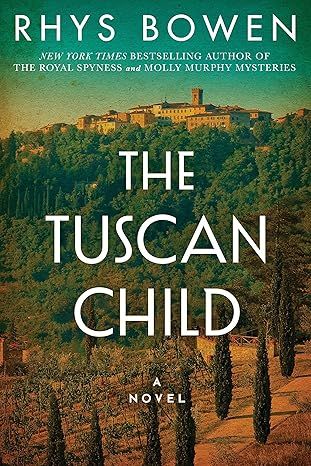
The Tuscan Child
4.2
-
100,022
$8.39
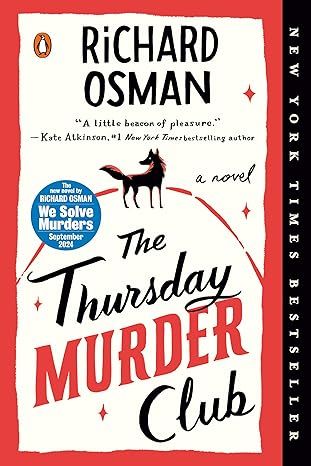
The Thursday Murder Club: A Novel (A Thursday Murder Club Mystery)
4.3
-
155,575
$6.33
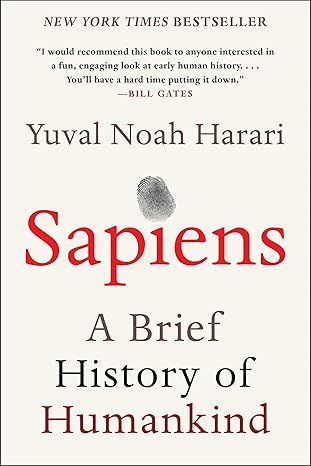
Sapiens: A Brief History of Humankind
4.6
-
140,302
$13.49
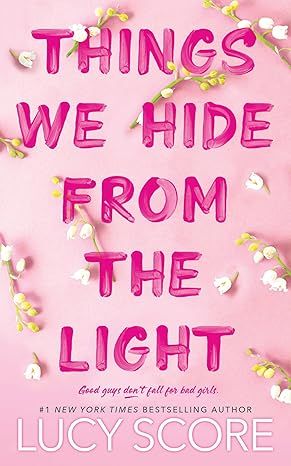
Things We Hide from the Light (Knockemout Series, 2)
4.4
-
94,890
$11.66
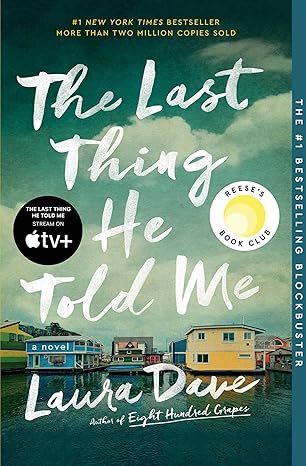
The Last Thing He Told Me: A Novel
4.3
-
154,085
$2.99

The Perfect Marriage: A Completely Gripping Psychological Suspense
4.3
-
143,196
$9.47
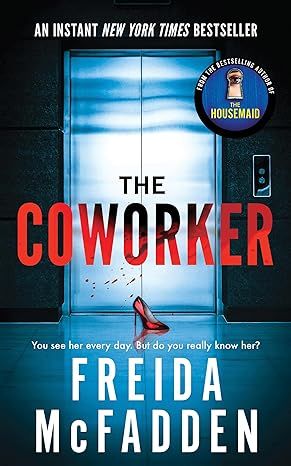
The Coworker
4.1
-
80,003
$13.48

First Lie Wins: A Novel (Random House Large Print)
4.3
-
54,062
$14.99

Mile High (Windy City Series Book 1)
4.4
-
59,745
$16.19

Layla
4.2
-
107,613
$8.99
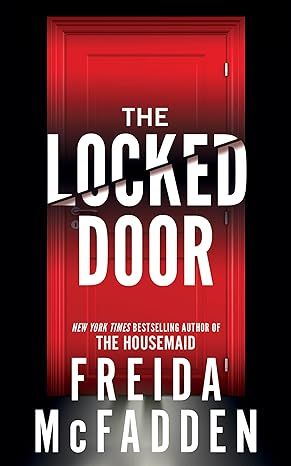
The Locked Door
4.4
-
94,673
$8.53

The Alchemist, 25th Anniversary: A Fable About Following Your Dream
4.6
-
150,148
$8.76
